Homesteading with a full-time job isn’t easy, but it is possible if you’re willing to put in the time.
Contents
- Our Homestead Story
- Learn one skill at a time
- Reexamine your time priorities
- Decide what skills are the most important
- Wake up earlier
- Get a partner
- Just get started
- Work ethic
- Scaling your homestead
- Homesteading will change
- Supplementing your full time income by homesteading
When we started on our homesteading journey I followed as many blogs as I could. I loved the idea of producing our food and being self-sufficient. The only problem was the time it would take to do all of those things.
Because I didn’t think we had time to homestead, we stayed stagnant for a while. At some point, I realized that people have been homesteading for hundreds of years. While it was a part of their life, it wasn’t their whole life. Certainly, there had to be a way to fit it in without giving up everything.
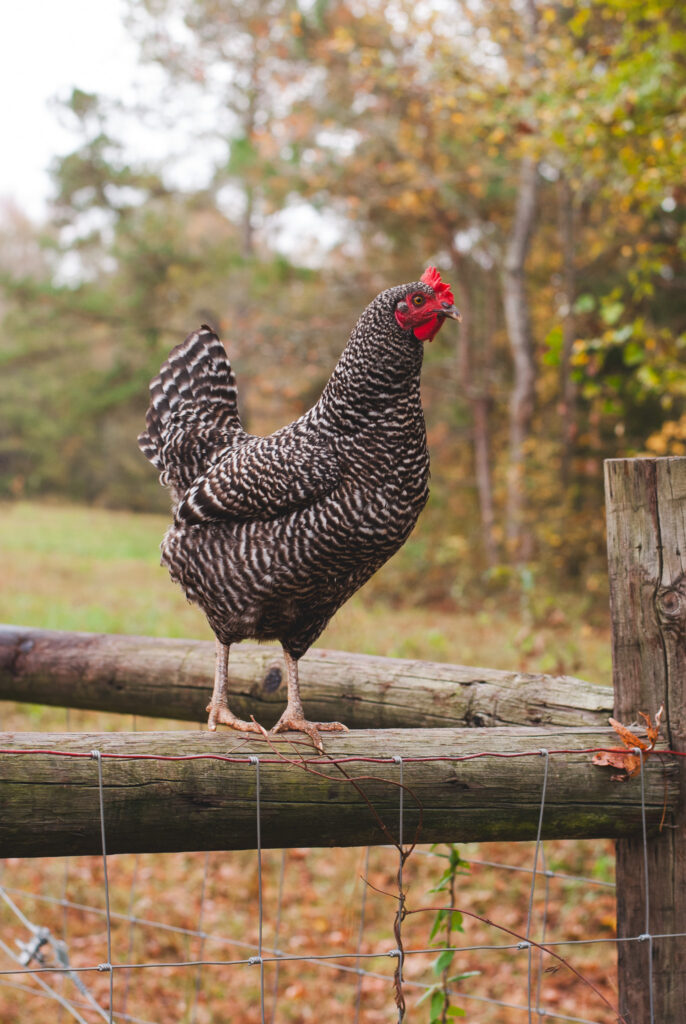
*This post may contain affiliate links which means I make a small commission at no extra cost to you. Read my full disclosure here.*
Our Homestead Story
Both my husband and I work full-time jobs that demand a lot of our energy and time. We’re very active in our church life and activities. We also have four active kids that attend public schools.
Despite all that we have a thriving homestead with gardens, fruit trees, chickens (both layers and broilers), ducks, pigs, and seasonal turkeys. It is a lot of work, and requires a time commitment. However, producing our food and raising our kids with homesteading skills is well worth the sacrifice of time.
We didn’t jump right into everything though. We’ve been slowly building this simple life over the past 8 years. Here is the truth about how we manage homesteading with a full-time job.
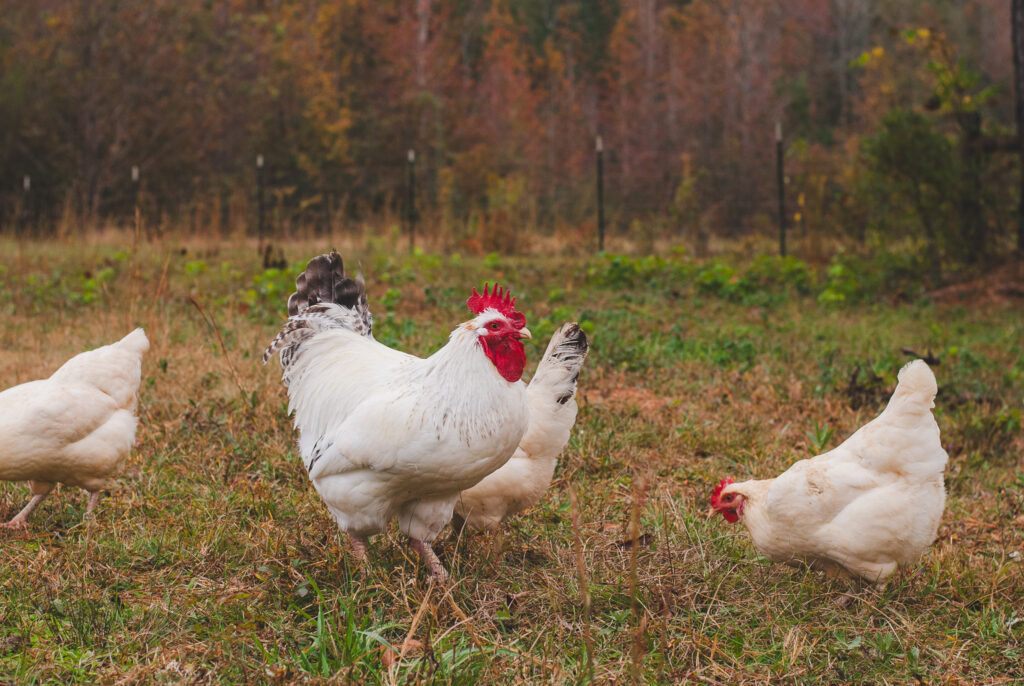
Learn one skill at a time
When you making the transition into homesteading the amount of skills you need to learn can be overwhelming. Gardening, animal husbandry, construction, and kitchen skills will quickly have you second-guessing if the lifestyle is right for you. When you’re working with limited time due to your job commitments homesteading can seem downright impossible.
As the old saying goes “eat the elephant one bite at a time”. Learn to homestead one skill at a time. If you are learning to make bread, focus on that skill. Learn it completely so that it fits into your everyday routine. You’ll be surprised at how easy it is to learn skills and add them to your schedule if you’re doing them one at a time.
Reexamine your time priorities to make homesteading with a full-time job work
While you don’t have to give up your career and goals to homestead, you will have to make some lifestyle changes. Raising animals especially requires commitment. At a minimum, they’ll need food and fresh water daily.
The first thing you will need to reexamine your priorities when it comes to homesteading. If you like to travel frequently, while not impossible, you’ll need to hire someone to care for your home. Read more about traveling with a homestead. If you have an active social life, or your children are heavily involved with extracurricular activities, you may need to make adjustments for your home commitments.
The best thing you can do is look at your life and determine what’s important. Then, make changes accordingly to leave more time for homesteading.
Decide what skills are the most important
Determine what skills are most important for your lifestyle and scale your homestead.
Personally, this was the biggest way my family was able to fit homesteading into our lives. Realize that you may not be able to do all the things.
It’s OKAY not to do every single skill out there. If you follow along with famous homesteaders it’s easy to fall into the assumption that you need to do everything to be a true homesteader.
For example: While I love fresh milk, a milk cow just wouldn’t fit into our schedule. So I opt to buy fresh milk instead of producing my own and I’m supporting another local farmer. The reality is there are just going to be some things that don’t fit into your life and that’s just fine.
Choose the things that are important to you and focus on those. If you are buying things from local farms instead of doing it yourself you’re still supporting a community sufficient way of life.
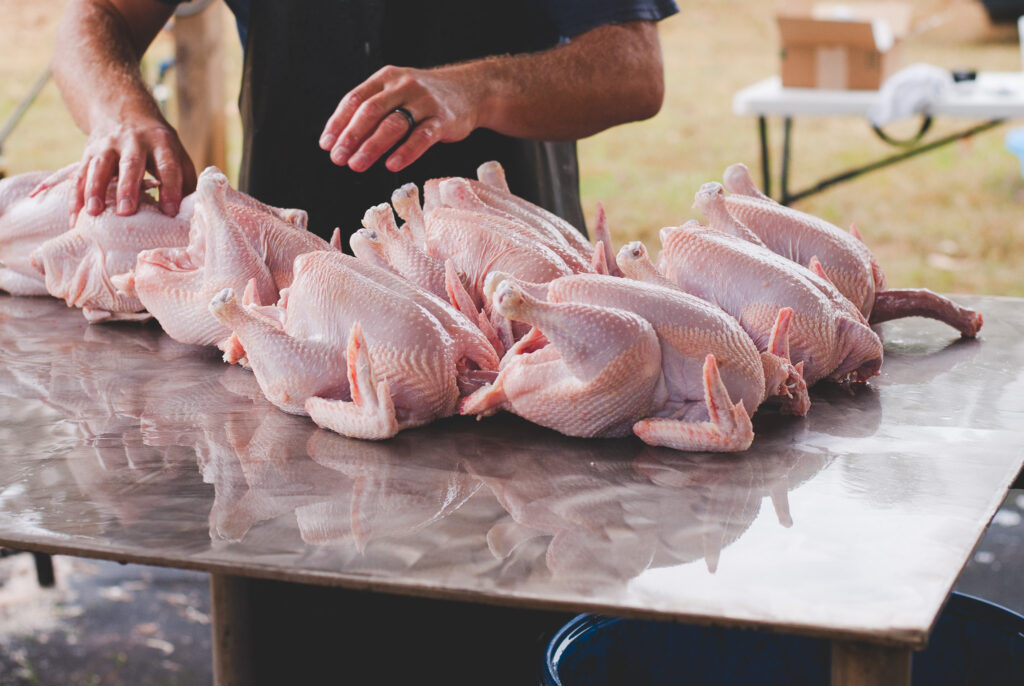
Wake up earlier to accomplish more
Waking up earlier can really help you manage your daily chores on the homestead while having a full-time job. By getting up an hour or two before you usually would, you can take care of a lot of your homestead chores in the early morning. This might include feeding the animals, watering the garden, or collecting eggs. Doing these tasks early means you have more free time in the evening to relax after work.
It might be tough at first to get used to waking up earlier, but once it becomes a habit, it gets easier. You’ll find that the quiet morning hours are a great time to focus on your homestead without any distractions.
Plus, it’s a good way to enjoy the sunrise and the peaceful start of the day. Getting things done early also means you’re not rushing around trying to fit everything in after work, which can make your day less stressful.
If you’re not a morning person, start by waking up just 15 minutes earlier each day until you reach your goal. This gradual change can make it easier to adjust.
The extra time you gain in the morning can make a big difference in keeping up with your homestead while managing a full time job. It’s all about finding a routine that works for you and makes your day run smoother.
Get a partner if you’re homesteading with a full-time job
Homesteading isn’t necessarily impossible for a single person, but working a full-time job and homesteading all by yourself can be a challenge. If you work from home, the tasks may be easier, but there will still be times when you need some help.
Having a husband on the same page as me helps tremendously. We can split tasks and save time by working together. If you don’t have a spouse to help you with the homestead chores, maybe an older child, neighbor, or friend could share commitments with you.
I highly recommend having someone you can count on if you’re homesteading with a job. A crisis will inevitably happen while you’re away at work, and you’ll need someone you can call.
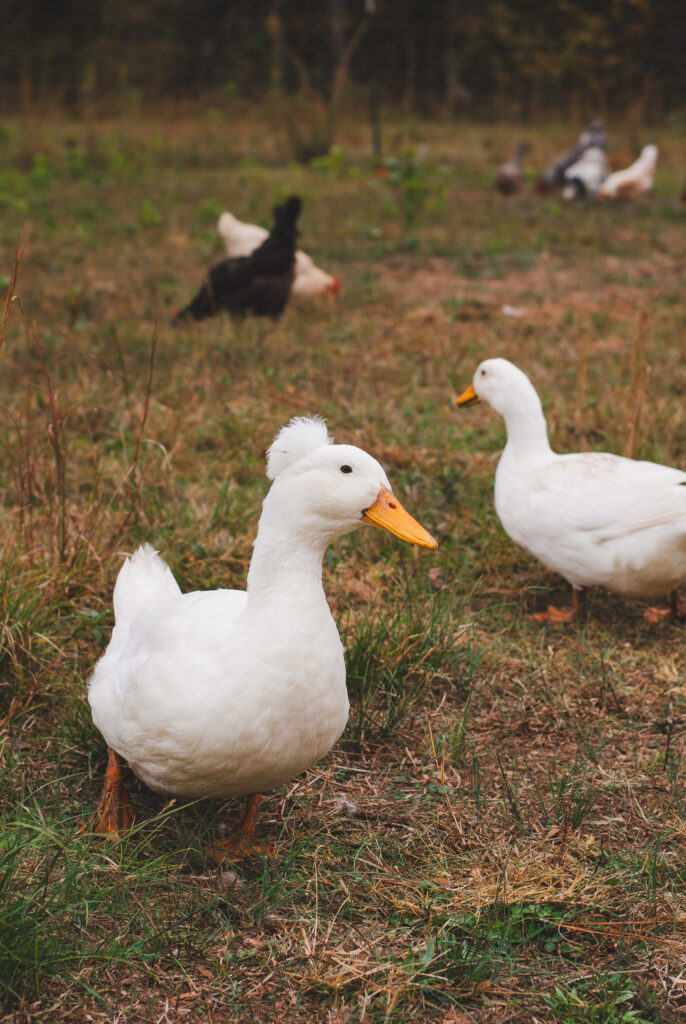
Just get started
Getting started is the first step. Move from just reading and watching other homesteads, to starting a homestead of your own. A lot of people never make past the dreaming stage. It’s amazing how much confidence a few chickens will give you to move forward.
Start somewhere small and manageable. Research animals that are low maintenance and will work on your land. Grow a few vegetables in a raised bed in your backyard. Learn to make sourdough bread from scratch. Little skills like these will give you motivation to move forward to bigger things.
Use modern technology to help you on the farm too. There are plenty of gadgets available that make homesteading easier when you don’t have unlimited time to spend. Modern homesteading is the way to go.
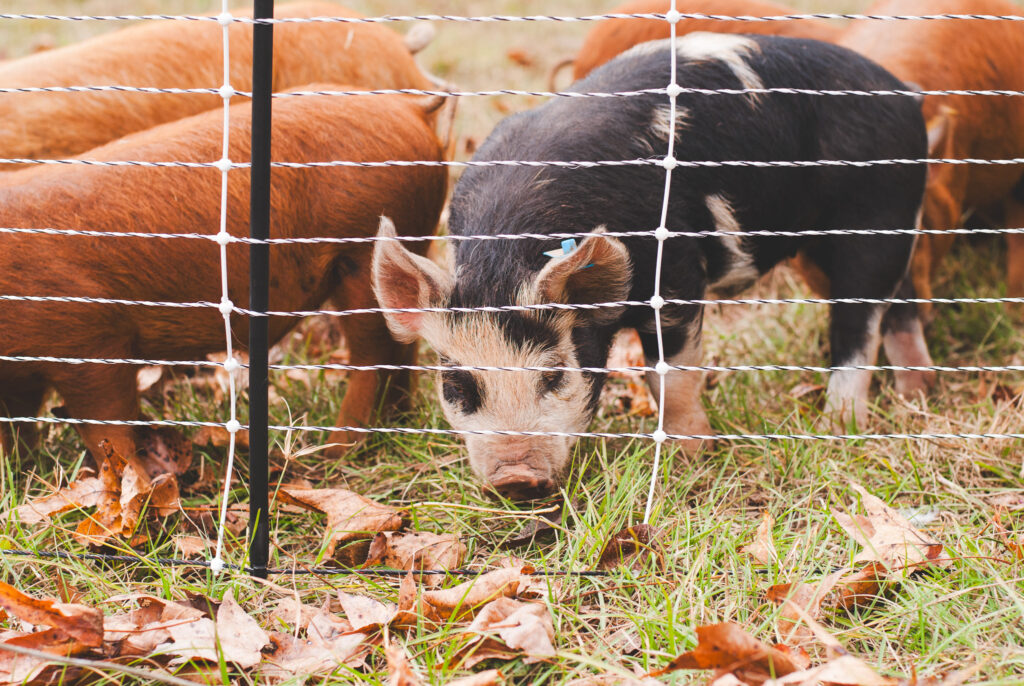
Work ethic
If you are choosing a homesteading lifestyle you have to like working. There is ALWAYS something that needs to be accomplished. While the lifestyle has been called simple, it’s not laid back or passive. You’re going to have to put in a lot of hours and time on growing your homestead.
Being okay with hard work is essential to growing and maintaining a homestead. Many people throw in the towel after realizing how much work it is. Take some time to examine your work ethic and what you’re willing to commit to before you jump in.
I will say that working on the homestead for us is very fulfilling. I feel so much more purpose in life working around the farm rather than lounging all day inside. Being willing to work hard is an essential part of being a homesteader.
Scaling your homestead for the time you have
Do your research before you jump into a homestead and decide what you can handle in yoru free time away from work. Nothing will make you burn out faster than getting in over your head when you don’t have much time to spare.
Growing your own food may be important to you. Start with a small garden instead of with a large garden. You’ll still be able to replace a few things you normally buy at the grocery store without over doing it. Raised beds a are great way to grow your own vegetables on a smaller scale. They’re also a great idea if you don’t have much extra space. Add a drip irrigation system on a timer for an even lower maintenance vegetable garden.
Choose animals that don’t need a lot of work, like chickens or rabbits. Chickens are great because they don’t take much time and give you fresh eggs. Start with a small chicken coop thats easy to maintaining and a few chickens.
Rabbits are easy to feed and take care of, plus they provide meat and manure for your garden. Keep your homestead small so you can manage it well. A smaller setup means you can focus more on a self-sufficient lifestyle without feeling overwhelmed.
Homesteading will change throughout the year
Homesteading changes with the seasons, so your tasks will vary throughout the year. In the spring, you’ll need to plant your garden, which might take some extra effort on the weekends.
Summer is busy with harvesting and preserving your crops, plus building and maintaining structures on your homestead.
Winter is a bit easier since your tasks decrease; you’ll mostly focus on keeping your animals warm and fed.
The seasonal responsibilities of your job can also affect your time. For example, an accountant might need extra help in the spring. Since I’m a teacher and have summers off, I get to spend a lot of time homesteading during that season. This lets me focus on the busiest time of year for the homestead without feeling too overwhelmed.
Supplementing your full time income by homesteading
Supplementing your income with your homestead can be a good idea, especially if you’re passionate about the homestead lifestyle and enjoy sharing it with others. There are a lot of creative ways to make some extra money while doing what you love. You might be able to earn enough to work part time.
One way is to sell your produce at a local farmer’s market. Fresh, home-grown vegetables and fruits are always in demand, and people love knowing where their food comes from. If you have chickens, you can also sell eggs. Fresh eggs are a hit, and if you have extra, why not make some money from them?
Another creative way to supplement your income is by hosting classes on gardening or harvesting chickens. Many people want to learn these skills but don’t know where to start. You can offer workshops on weekends or during the summer when you have more free time. This not only brings in extra money but also helps build a sense of community and shares your knowledge with others.
If you enjoy writing, consider blogging about your homestead lifestyle. You can share tips, recipes, and stories from your homestead. Over time, you can build an audience and make money through ads or sponsored posts. Another option is to create and sell online courses. You could teach people how to start a garden, raise chickens, or preserve food. This takes some time to set up, but once it’s going, it can provide a steady income.
It’s important to remember that it takes time to build up a viable income with a homestead. You won’t become rich overnight, but with determination and hard work, you can make it happen. Start small and gradually grow as you gain more experience and confidence. The key is to find what you enjoy and what works best for your situation.
By combining a part-time job with the income from your homestead, you can enjoy the best of both worlds. This balance allows you to support your family while living the homestead lifestyle you love.
Homesteading with a full-time job: final thoughts
Can you work full-time while running a homestead? Yes, you can work if you’re willing to put in the time and effort, prioritize your skills, and choose the skills that are most important to you. Start slowly, but just get started and you’ll be surprised at how far you can go.
If you enjoyed this article, please share it! Thank you for visiting my farm.
More from the farm
Growing Okra From Seed
Growing Okra from seed is so easy, it will be a staple in your summer garden. Save seeds from your crop to plant again and again.
Many traditional southern gardeners have a yearly crop of okra. The plant loves the heat, so it grows well in the deep south. This season we’ve had several days with temps well into the 100s. While my other plants were wilting, and the tomatoes gave in, the okra is still going strong.
[…] Homesteading With a Full Time Job […]